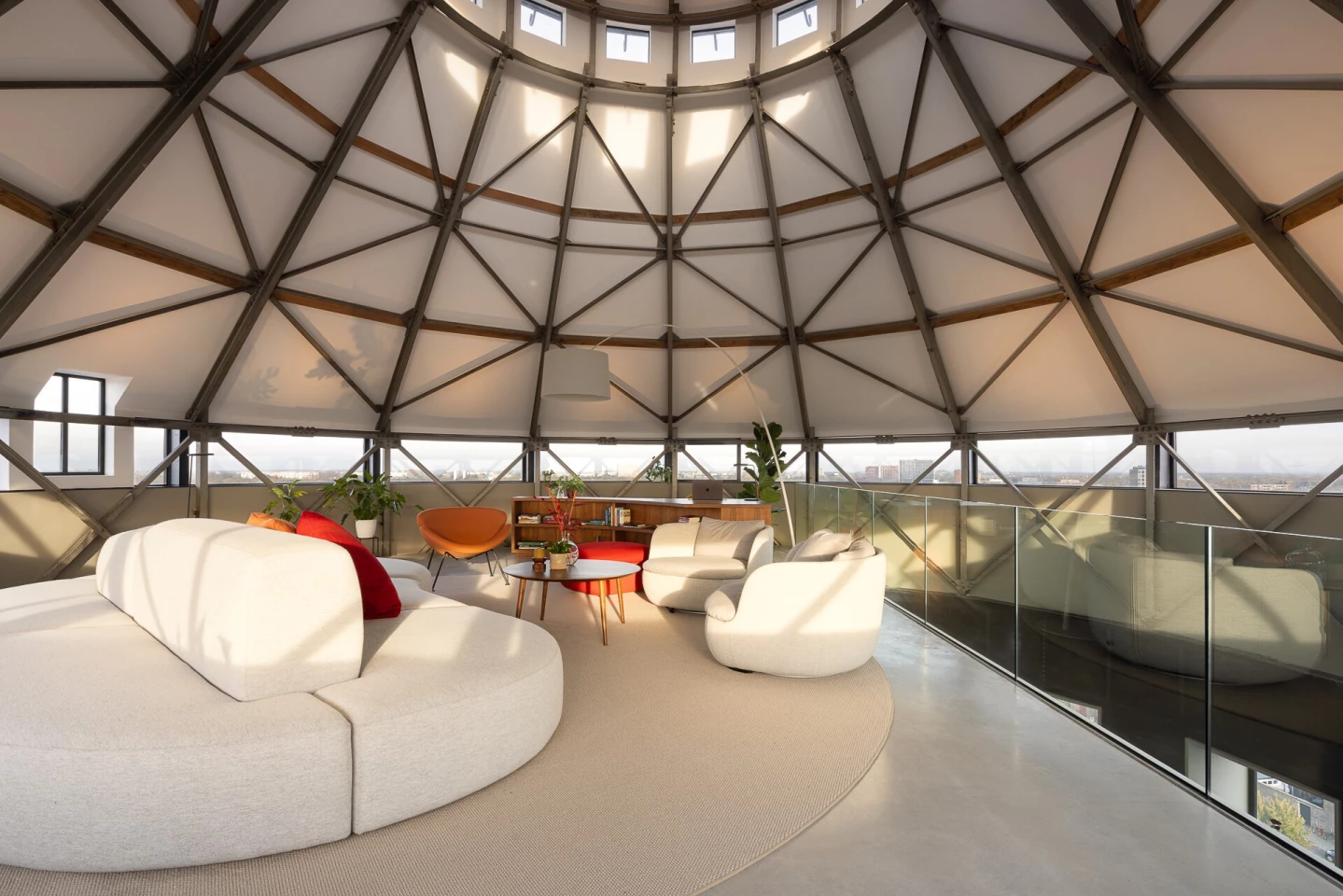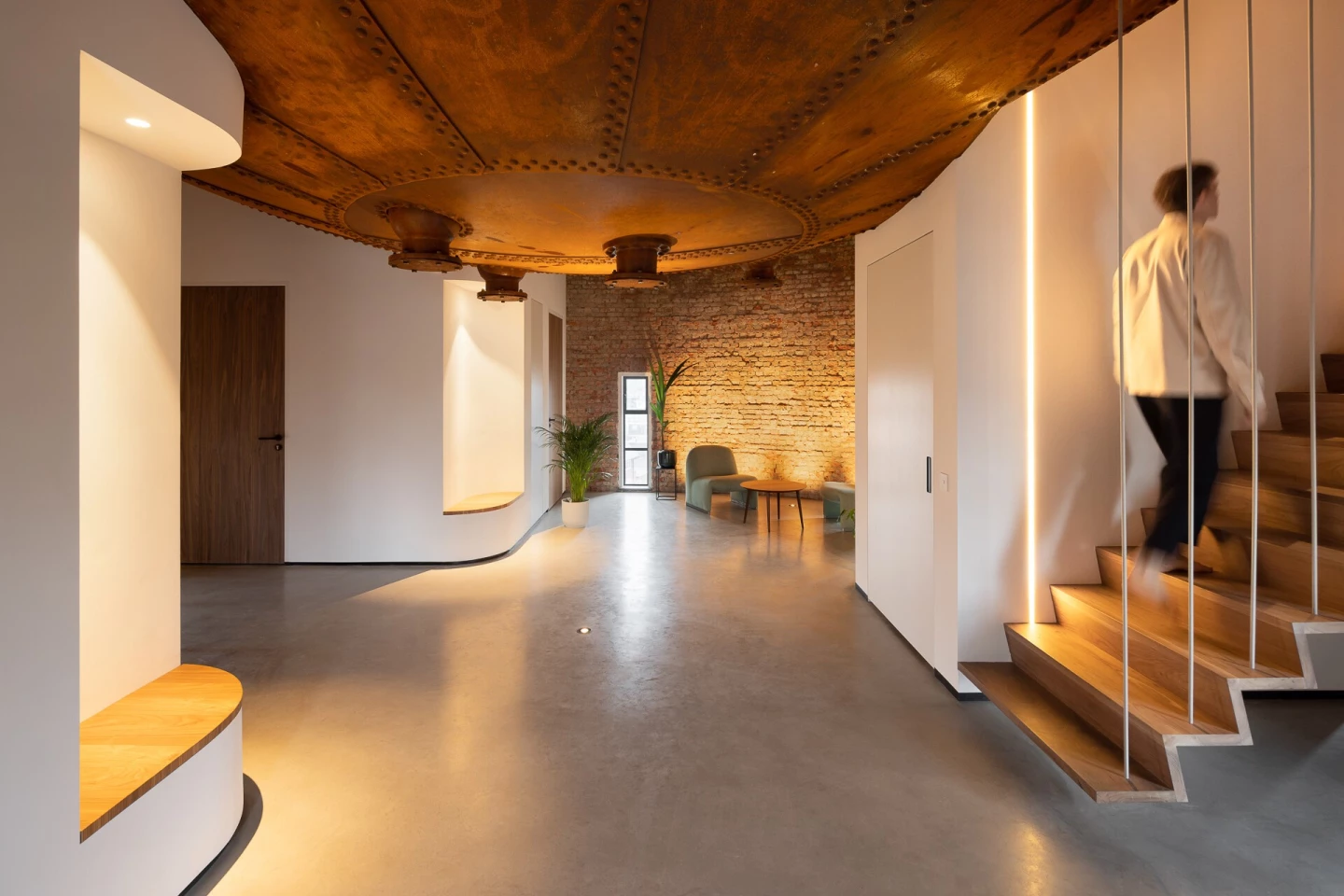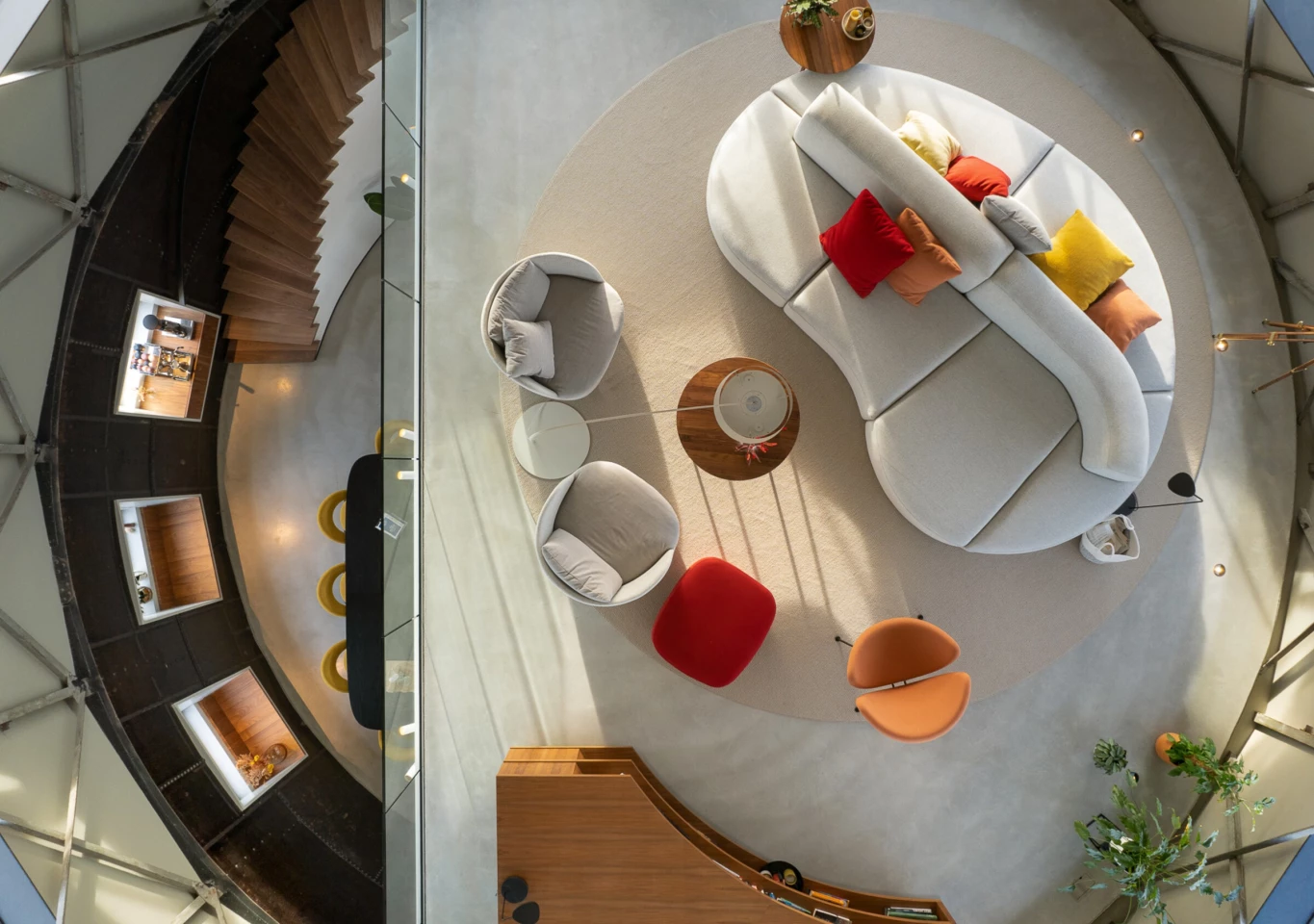Dutch architectural firm Zecc Architecten has recently converted an abandoned 19th century water tower into a collection of light-filled modern apartments, complete with industrial flair and 360-degree views. Located in the city of Utrecht, Netherlands, the once decrepit Amsterdamsestraatweg, which is listed as a national monument, has been brought back to life with this stunning transformation.
The revived water tower is now home to three identical luxury apartments stacked above one another, a six-story penthouse, and a cafe and retail space on the ground level.
Each apartment occupies its own entire level and has been masterfully installed within the circular frame of the structure. The architects were conscious to integrate many of the original industrial features of the water tower into the interior design of the homes, including original brickwork, wooden and steel beams, metal interior paneling, and concrete flooring.

Each apartment includes a private elevator entrance; open shared living and dining space with integrated kitchen; bathroom; 360-degree windows with views across the Dom; a Corten steel-framed outdoor terrace; and cathedral high ceilings, which enabled the firm to include an elevated mezzanine bedroom that overlooks the rest of the home.
“The challenge for this design lay in creating good daylight openings, a beautiful outdoor area with a view of the Dom and good access with a lift and safe stairwell,” explained Zecc Architecten. “From the elevator you step directly into the apartment. A solution that gives an exclusive feeling and at the same time saves space.”

At the very top of the tower, the architects created a stunning 400-sq-m (4,306-sq-ft) penthouse that stretches over six stories. This home comprises a window-less cinema/concert room; three guests bedrooms each with a private bathroom; master bedroom with en-suite; relaxation zone; storage room; large modern kitchen on the 8th floor with a large void that overlooks the stunning roof construction; and standout living quarters on the 9th floor, with triple-height ceilings and striking 360-degree views.
“The space becomes more and more open towards the top, creating a spectacular succession of floors, voids and views,” said the firm. “The space on the ninth floor is overwhelming. Under the high roof construction of steel and wood, panoramic windows have been made all around for a 360-degree view.”

In the future, the rear section of the remaining Amsterdamsestraatweg facilities will be converted into a series of compact apartments. The plan aims to further distinguish the urban development and preserve the iconic presence of this free-standing historical monument.



















